
Building Design from the top down or Unit Design from the bottom up. Pick one.
The Problem We are Actually Solving...
Building design wants to originate from the site. It wants to be top-down. It wants to match a property line that is 123'-3/16" long. Building design wants to be fluid.
Unit design wants to originate from the human body. It wants to be bottom-up. It wants to take into account materials that can be engineered. It wants to be spatially rigid and conform to explicit, human friendly dimensions. Units want to be 30' wide--not 30' - 3/32".
Building design and unit design are like two parents with different parenting styles. The children of these parents are always a mix of compromises... A unit could be an odd dimension, so that all other units course with a structural grid. A building mass might not extend all the way to a setback, because the off-the-shelf units couldn't course to that dimension. My favorite? A unit has an electrical closet consuming 60% of it because the city wanted access to electrical meters every 200' from the outside. Process often yields unexpected (read UNWANTED) results.
Enter the Unit Database
TestFit is committed to better multifamily design. In order to coordinate between the building and the units, we are taking a database approach. This is important, because a better database will yield less crummy dimensional issues down the road, say, in DD or CD. Thousands of architects and developers already have massive libraries of units. These units are often pulled off the shelf and jumbled together, and not considered from 10,000 feet. If we did consider all of the units together, and how they can be used together like a team, rather than an individual, we can solve any site plan with off-the-shelf units (hello prefab?).
For the TestFit database health check we are looking for three things:
- Can the units work well together in their width? This is the inline unit score.
- Can the units work well together when turning corners? Especially irregular corners. This is the angular score.
- Can the units work well together to achieve a wide variety of unit averages? This is the target area score.
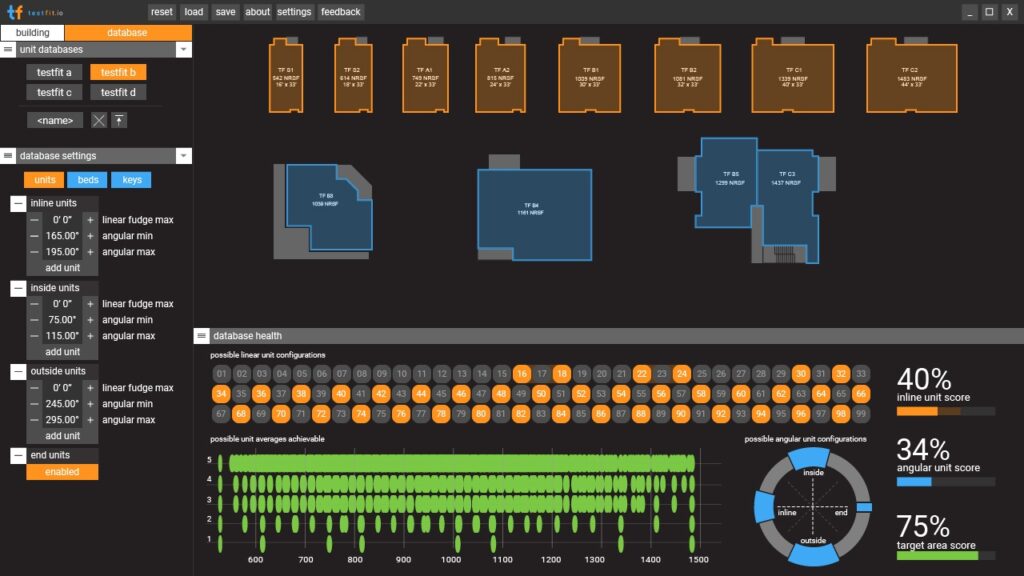
The Inline Units
The most popular unit type is inline units. These could be townhomes, hotel keys, or multi-unit housing, but the principle of an inline unit is that it has other units on two sides, entry on one side and access to the outside world on the fourth. TestFit needs to accommodate bays, balconies, and entry conditions in order to be truly useful. A wide array of these will enable all linear dimensional constraints to be satisfied. Allowing these units to "fudge" assists even more. A "fudge" is when a base unit grows either in width, or a wall skews at an angle to accommodate irregular building mass. Fudging is essential to accommodate a top-down building design process.
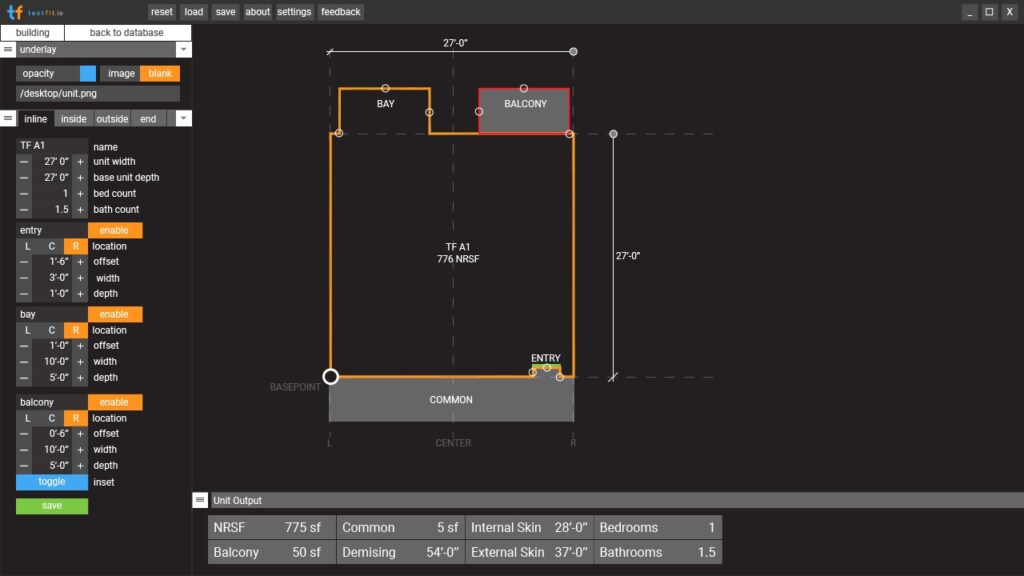
Inside Units
The most complicated unit type is an inside corner unit. These units are constrained by the facade deflection when building mass turns corners. These units occur most often with multifamily buildings, but also happen with parking stalls, offices, or hotel rooms. They are most notable as being multifamily's problem child. If a building is non-orthogonal, a word meaning involving right angles, the inside units absolutely need to fudge in some kind of angular manner.
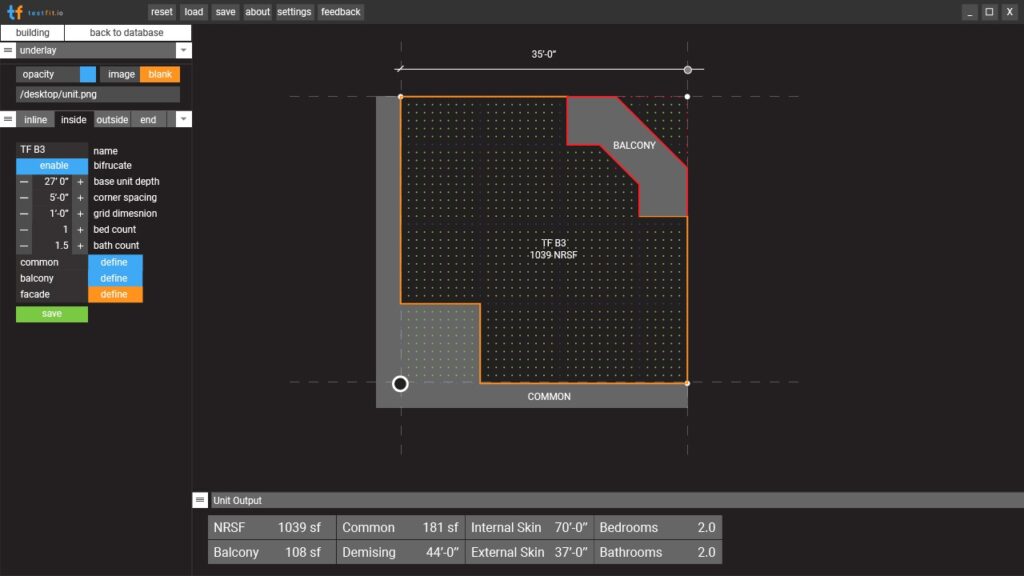
Outside Units
Easily the best kind of unit--the skin to nrsf ratios are second-to-none. These units have tons of light, tons of area, and generally fetch the highest rents. The Outside units are almost always a resultant geometry, and designed to accommodate some kind of architectural feature.
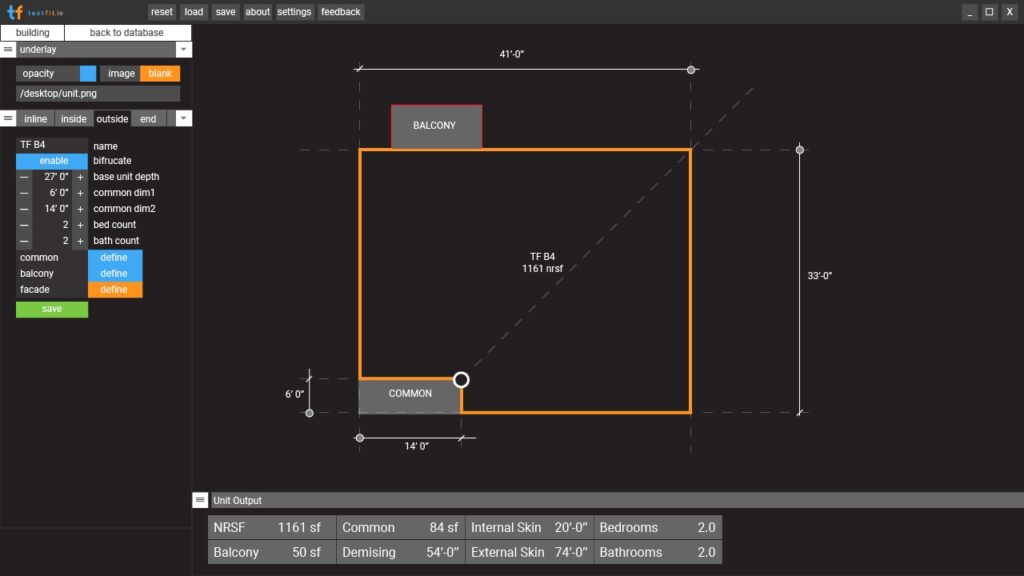
End Units
The edge case, normally only seen on towers, or the rare dead-end corridor on wrap buildings, end of mass units are very special, and almost always are coordinated with the site conditions, as opposed to being pulled off of the shelf. Nonetheless, we are providing a way to construct this assembly within the unit editor. The major design constraint on this assembly is the staircase placement, and how other units interact with it. This will affect the placement of all other staircases, firewalls, and lifts within the TestFit environment.
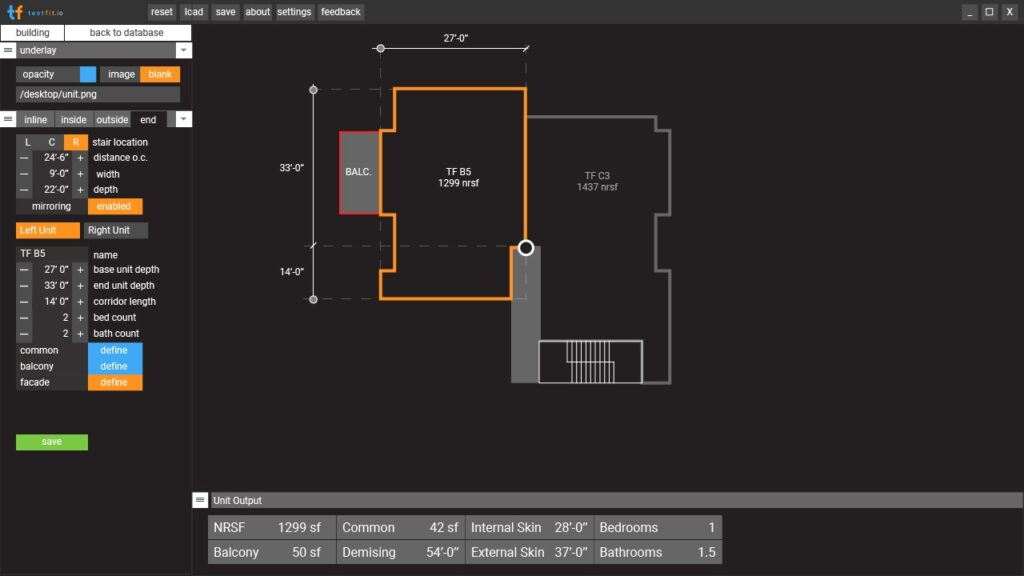
A Sneak Peak
TestFit will launch the TestFit unit editor to everyone in July for feedback!







